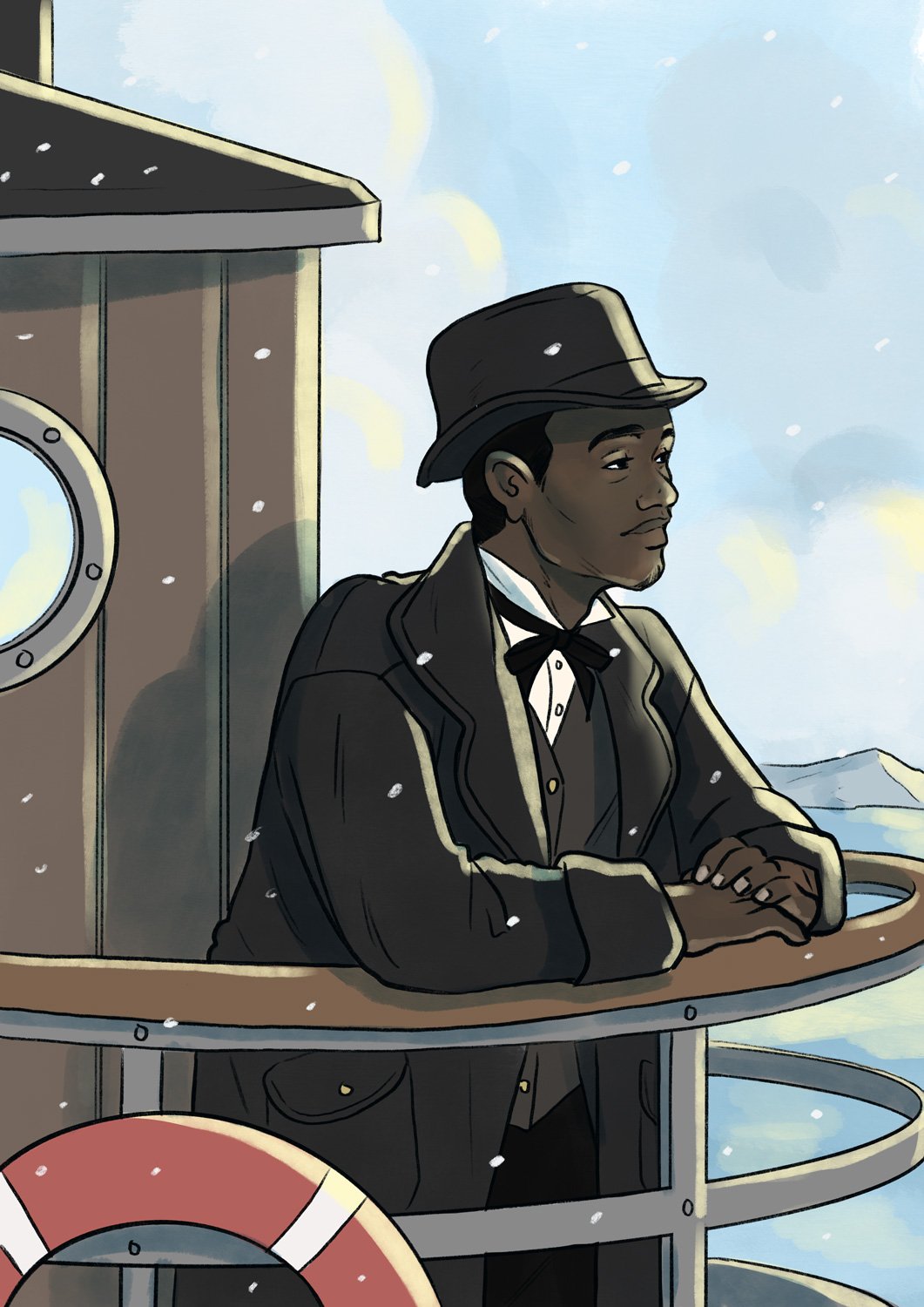
In 1886 and 1887, the newspapers in Halland and Skåne wrote about such an impresario. A German man named H Thieme traveled the Swedish countryside, showcasing several troupes of black men in return for money.
G. Letsom, L. Dalton, and their friends were unlucky enough to have met Thieme in Hamburg or London, where they had signed contracts for work. Thieme had told the men that he owned a circus in Helsingborg and that this was where they would work - 'in suits.' However the men had committed themselves to perform under whichever conditions the Circus Director required, including, for example, 'acting like a savage' in a tent in Halmstad. To appear as 'savages,' they must scream, roar, and of course eat live pigeons and rabbits. How would they otherwise be convincing as 'savages'? Furthermore, by contract, the men had to accept salary deductions for 'disobedience, drunkenness, rowdiness, and impertinence.' In this way, Thieme stood to make the biggest possible profit, as he decided when the men were any of these things.
When the first troupe arrived in Halmstad in 1886, they encountered press and police problems. According to large and brash posters, Thieme promised a spectacle of Nubians, Africans, Indians, 'and other in Sweden unusual creatures' - except, he only had a few men with him. The press also had views on the authenticity of his 'savages.' 'Their skin color is probably genuine,' the editor of Hallandsposten wrote, 'but the men appear modest rather than savage.' 'They are probably demobilized sailors,' he reasoned. Moreover, at least one of the men understood a little bit of Swedish, and if you know Swedish, you cannot be such a ’savage’ after all. Yet, Impresario Thieme brazenly claimed he had never promised anything other than 'impersonations of savages.' And that 'a bandit on stage is not necessarily a bandit in real life’.
In November, Thieme abandoned his troupe of men in Helsingborg. He also left behind his wife, and the carriage they had all lived in during the tour. Since the former 'savages' were now wholly destitute, they came under the care of the Helsingborg Police. The latter thought they were very civilized indeed! The men spoke fluent English and wanted nothing better than to return to England. After a few days - and somewhat reluctantly - the British Consul ensured that they could leave for London 'where they belonged.'
But just a few months later, in January 1887, history repeats itself. This time around, the troupe encompassed four or five young West Indians whom Thieme decided to leave to their fate in Eslöv. The police in Malmö tried to get the impresario to take care of his artists. However, he refused and 'had the audacity to accuse them of disobedience.' And if that was not enough! When the men, with the assistance of the police, retrieved what few belongings they owned, 'their trunks are found to be broken, and garments torn or cut into pieces.'
It was shameful, the people thought. All media disinclination was then aimed at Thieme and other 'foreign humbugs' for cheating honest, good people out of their money. Malmö County Prison housed the Caribbean men for a few days. According to the local newspaper, they behaved exemplary and met great kindness. The Prison Director and his friends provided the men with proper clothing, such as hats, overcoats, and suits, before boarding the steamship Vesta to Newcastle on 3 February. What happened next is anyone's guess!
Sources
Information about Letsom, Dalton, the other 'savages' and their impresario sourced from https://tidningar.kb.se